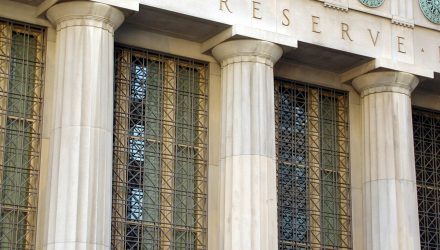The close of the the third quarter was not without incident, as the biggest banks in America tapped the federal reserve for $63.5 billion in overnight repo funding on Monday.
Repo, is short for repurchase agreements, or transactions that amount to collateralized short-term loans, often made overnight. Repo deals permit significant investors like mutual funds to profit through short-term lending of cash that might otherwise sit idle, thereby allowing banks and broker-dealers to get needed financing by loaning out securities they hold in return.
While $63.5 billion in funds seems sizable, the Fed would have offered up to $100 billion of those loans, so in a sense the loans were under-subscribed. One positive interpretation of this the Fed’s willingness to supply the banks is that there isn’t as much of a need to access federal reserve cash as there has been in recent weeks, which signifies that ultra short-term interest rates have now stabilized.
Originally some experts felt that this surge in in rates could signal the early stages of a potential credit event that could lead to a broader market downturn. Although equity markets are plummeting today due to poor ISM data, it is unclear whether the repo operation is playing into this massive selloff as well.
While news of the repo market has been discussed for quite some time in the cash and collateral trading circles, it is now becoming more mainstream, as much of Wall Street is paying a lot more attention to those money markets as a possible indicator for any potentially systemic stress in the future, which could lead to a looming recession.
This most recent repo operation is just one of several events that have occurred over the last few months. In an unusual situation, the Fed’s own benchmark fed funds target rate rose to 2.3% the day before the last FOMC meeting, cresting the target range set when it reduced rates at its last meeting in July.
At that time, another rate the Fed watches, the secured overnight financing rate, or SOFR, rocketed higher to 5.25% from 2.43%. That is the median rate for $1.2 trillion in short-term funding transactions that occurred just weeks ago. SOFR affects floating rates on about $285 billion outstanding in corporate and other loans, making short-term funding much more expensive.
A CNBC report recently stated that the Fed “is in the process now of conducting overnight repurchase, or repo, operations to make sure that funding for overnight loans stays constant and the funds rate trades within its targeted range of 1.75%-2%. In announcing the program, officials noted that the last time such a process happened was 11 years ago, amid the grim days of the crisis when liquidity dried up and caused a panic on Wall Street.”
The situation is eerily similar to what happened in the midst of the final crisis over a decade ago.
“Anytime you have anything juxtaposed to 2008, it tends to cause anxiety. What it did was suggest that the Fed doesn’t have a handle on this,” said Quincy Krosby, chief market strategist at Prudential Financial. “They weren’t able to foresee this. That said, if they could come up with a facility for this, the issue will dissipate as a source of concern.”
“Going forward, we’re going to be very closely monitoring market developments and assessing their implications for the appropriate level of reserves,” Powell said at a news conference following last week’s announcement of a rate cut. “And we’re going to be assessing the question of when it will appropriate to resume the organic growth of our balance sheet.”
For more market trends, visit ETF Trends.

